On June 10 and 11, almost 300 scientists participated in the Land-Atmosphere Interactions 2021 Workshop, “Improving understanding of land-atmosphere interactions through integration of surface flux and atmospheric boundary layer measurements.” The workshop was organized in conjunction with the AmeriFlux Year of Water Fluxes, and in collaboration with, and community representation from, DOE’s ARM User Facility, and ASR and ESS programs.
The objective of the workshop was to identify synergies, opportunities for collaboration, and new avenues for cutting-edge research related to the integration of surface flux and atmospheric boundary layer observations. Specific questions focused on in talks, breakout groups, and report-backs were:
- What are the high-priority research questions that can be addressed with existing measurements (e.g., data from AmeriFlux sites with collocated instrumentation for boundary layer measurements, or nearby radiosonde/profile measurements)?
- What new boundary layer measurements should be prioritized, and where? What are the cutting-edge research questions that could be addressed with these new measurements?
- What is needed to increase interdisciplinary collaboration between ecologists/biogeoscientists/micrometeorologists and atmospheric scientists? How can we best share tools that are necessary to process, analyze, and interpret boundary layer measurements?
- How can this kind of collaboration improve predictive understanding of biosphere-atmosphere interactions and land-atmosphere coupling?
The workshop was organized into five theme areas (“Big Picture” Overview, Instrumentation/Remote Sensing, Modeling, Water, and Aerosols/Clouds), with each area being introduced by 2-3 talks by invited speakers. All talks were pre-recorded and then streamed during the meeting, but were also made available for asynchronous viewing through the AmeriFlux YouTube Channel (where they have been permanently archived). Invited speakers were encouraged to coordinate amongst themselves when preparing their talks. This highly successful approach resulted in a cohesive set of presentations, and the speakers were able to point to linkages across different themes. During the talks, workshop participants submitted questions for the speakers using the PollEverywhere platform, which allowed “upvoting” of popular questions and led to an enjoyable and informative moderated discussion. Each set of talks was followed by a breakout session; participants were pre-assigned to one of 20 breakout groups, which they remained with as a “pod” during the entire meeting. The breakout discussions were structured around a set of prompts which were then used to guide the report-backs. The prompts were as follows:
Instrumentation/Remote Sensing
- How can planetary boundary layer (PBL) observations (spaceborne or suborbital/ground) be used to bridge community divides and integrate across hydrology, atmospheric science, and bio/eco/carbon ‘coupling’?
- How can we address disparate observational scales (spatial, temporal) when studying land-atmosphere interactions? Which land-atmosphere processes are better studied at short vs. long timescales or fine vs. coarse spatial resolution?
Modeling
- How can we better observe transient and wet events (e.g., with new instruments or data processing), to understand boundary layer, cloud, and storm dynamics particularly as they relate to land-atmospheric coupling?
- Are we missing observations to validate biochemical and physical processes simulated with the large-eddy simulation technique? Please include processes from the leaf to cloud/regional scales in your discussion.
Water
- The relationship between soil moisture and surface fluxes of water/energy is site-specific and changes with rooting characteristics. How can AmeriFlux observations be used to understand the seasonal evolution of the soil moisture – evapotranspiration (SM-ET) relationship? How does the threshold soil moisture value change as vegetation greens up in the spring/wet season? How do agricultural sites differ from forested or barren sites in this time evolution? How dependent is this relationship on the forest structure (age, height, composition, rooting depth, etc.)?
- What processes typically considered to be “boundary-layer processes” would benefit from better measurement of hydrologic cycles pools and fluxes (soil moisture, soil water potential, sapflux, evapotranspiration (ET), precipitation)?
Aerosols/Clouds
- How will the plant-aerosol climate feedback vary across different types of terrestrial environments (grassland, conifer forests, broadleaf forests, crops, etc.) and seasonally within each of those environments? Which biomes and seasons do you expect aerosol growth and cloud properties will be more intimately coupled with surface processes and why?
- How do aerosols and aerosol effects influence land-atmosphere interactions? From the other perspective, how do land-atmosphere interactions influence aerosol effects? What key measurements are needed to better understand land-atmosphere interactions mediated by aerosols and clouds?
The organizing committee gratefully acknowledges the efforts of the invited speakers and also the 40 volunteer breakout facilitators who did a wonderful job steering the discussion.
Day 2 of the workshop featured a lively poster session, held using the GatherTown platform. With a layout that brought to mind a 1980s video game, participants navigated their avatar through a virtual ballroom that also included informal gathering spots (complete with arm chairs and potted plants) and a message board. One attendee commented that this was “BY FAR the best virtual poster session that I attended in the last 16 months”. Over 50 abstracts were submitted (and assembled as a PDF booklet), and a half-dozen vendors had staffed information booths (though unlike an in-person meeting, there was no free swag!). While presenters are obviously no longer at their posters, all posters can still be viewed online.
And last but not least, on Day 2 members of the FLUXNET Early Career Network and Latin America Early Career Earth System Scientist Network organized two mixers to provide networking opportunities and promote social interaction for self-identified early career scientists. These well-attended events featured a Trivia Challenge with difficult questions from across the range of disciplines spanned by workshop participants. A competitive spirit developed among the different teams and resulted in many new friendships being formed.
Although the COVID pandemic essentially precluded an in-person meeting, the decision to go completely virtual enabled broad participation from scientists around the world: there was no registration fee, and to ensure a diversity of participants registration was open to all interested scientists regardless of career stage, institutional affiliation or home country. In this regard the workshop was an enormous success: of over 400 workshop registrants, about half were early career (self-identifying as student or postdoc), and although more than half the registrants were scientists based in the U.S., 40 other countries were represented (Table 1). At the conclusion of the workshop, one participant commented that “As an early career scientist, [the workshop] was very helpful and encouraging” while another noted that “it was great to meet people whose papers I had read.”
A post-workshop survey further supported the idea that the virtual format enhanced the workshop reach to include communities that were not previously involved in AmeriFlux or DOE ARM/ASR activities: for example, two thirds of survey respondees had never attended an AmeriFlux meeting before, and three-quarters of the participants had never attended a DOE ARM/ASR meeting before. Additionally, 97% of survey respondees thought that the workshop environment had been inclusive. More than 98% of respondees indicated they would participate in a follow-on workshop, although there was an overwhelming preference for a virtual (80%) rather than in-person (24%) meeting.
To provide a baseline for tracking trends in diversity and inclusion at AmeriFlux-sponsored events, the survey included a number of questions on gender identity, sexual orientation, disability status, and race/ethnic origin. Participants from a wide range of countries were able to join the workshop, which was reflected in about 50% of the survey respondents identifying themselves as “Asian or Pacific Islander”, “Hispanic or Latino or Chicano”, or “Indian”. However, no survey respondents identified themselves as “Black or African American” or “Native American or Alaskan Natives” highlighting the continuing need to reach out to and include researchers from underrepresented groups. The gender of invited speakers and organizing committee members was balanced. However, survey respondents identified themselves mostly as man (i.e., two thirds of respondents).
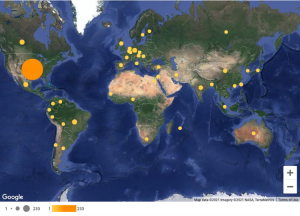
Figure 3. Current country of residence of workshop registrants. Symbols are colored and scaled in size according to the number of registrants.
The workshop sparked at least a few new collaborations and ideas for research. One participant remarked that “I got great ideas to finish a paper we have had in the drawer for a while,” while another noted that the workshop “stimulated several new ideas to be pursued in my organization’s research,” and a third commented that they had enjoyed the opportunity “to meet new collaborators.”
The organizing committee is working on several follow-on activities. A full meeting report, which will include a synthesis of the key topics of discussion, is being prepared for publication, and a journal special issue on the topic of land-atmosphere interactions is under consideration. There is also an organized session (B042) for the 2021 AGU Fall Meeting focused on the theme of the workshop. Finally, interested researchers at all levels — from students to senior researchers are encouraged to join the Land-Atmosphere Interactions Google Group. For more information, please contact LandAtmosphere2021@gmail.com.
Submitted by:
Andrew Richardson and Eric Beamesderfer, Northern Arizona University
Christin Buechner, Lawrence Berkeley National Laboratory
Celia Faiola, University of California, Irvine
Manuel Helbig, Dalhousie University
Zulia Mayari Sanchez Mejia, Sonora Institute of Technology
Ana Maria Yáñez-Serrano, CREAF
Yunyan Zhang, Lawrence Livermore National Laboratory
ADR acknowledges support for workshop planning from the AmeriFlux Management Project and the Department of Energy’s Office of Science.

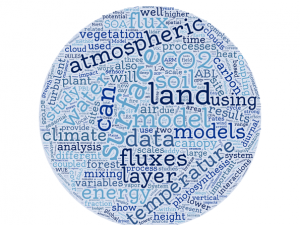
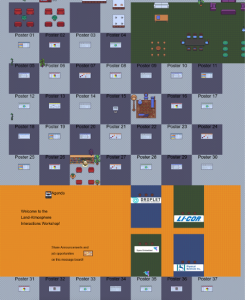
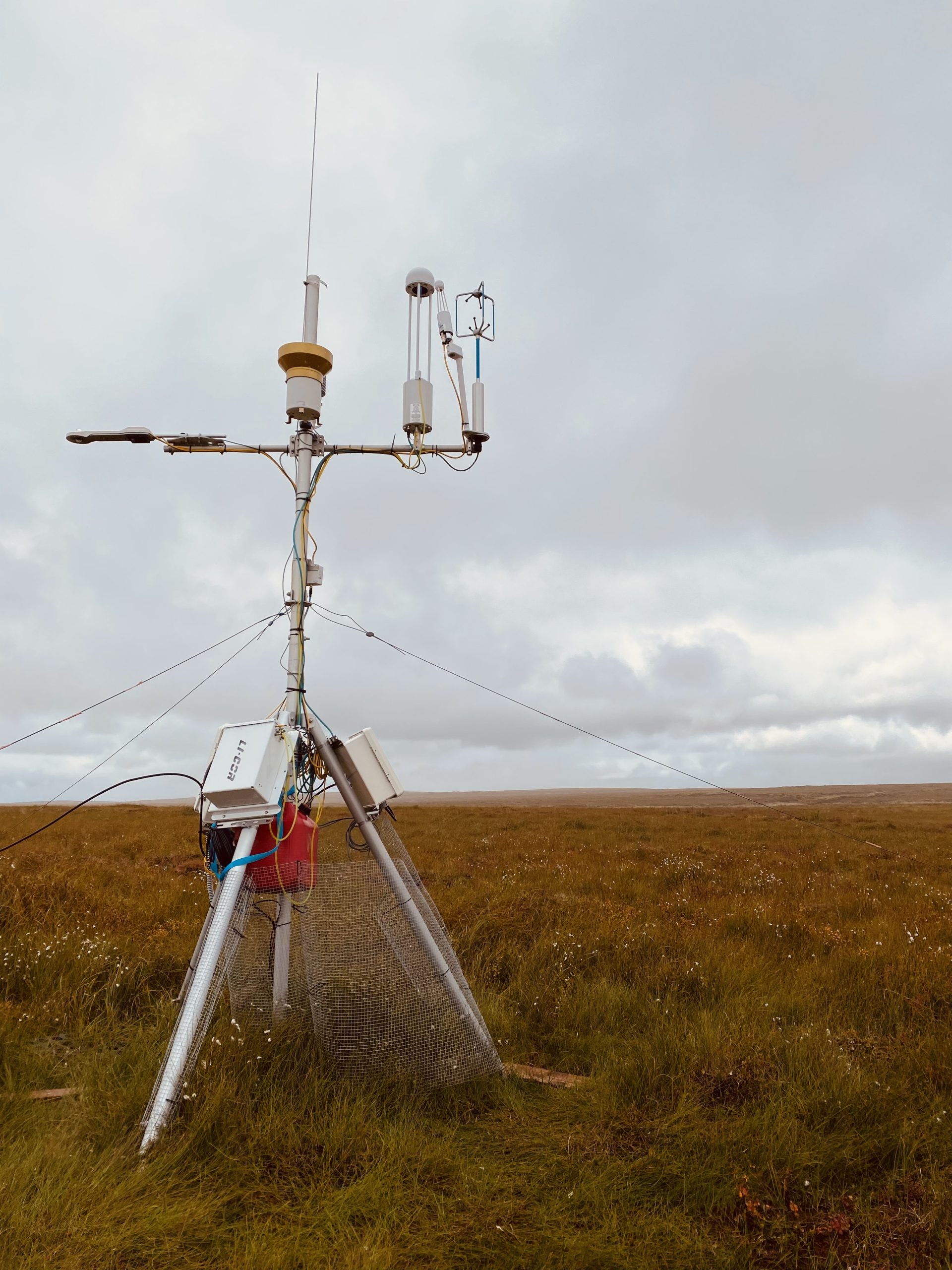
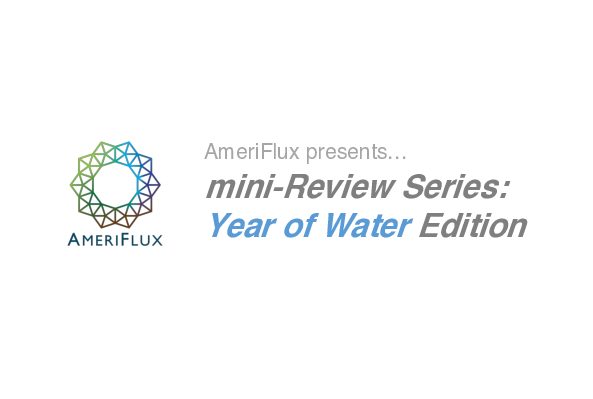



No Comments
Be the first to start a conversation